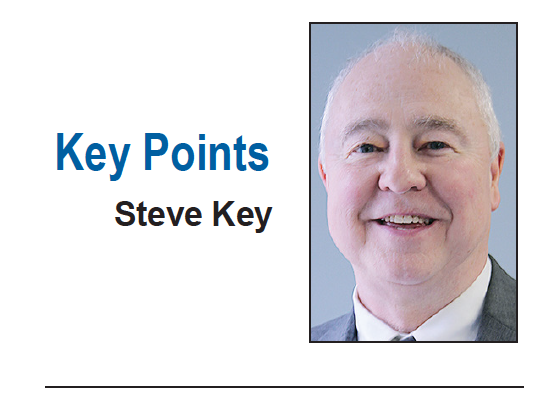Key Points: Steve Key, executive director and general counsel, Hoosier State Press Association
Everyone appears to be in agreement – the old economic model for newspapers is broken. The struggle now is development of a new model or models.
The New York City battle for circulation between Joseph Pulitzer’s New York World and William Randolph Hearst’s New York Journal created the large-circulation newspapers that depended upon advertising revenue, rather than readership revenue or political party subsidies.
Technology and retail business changes have continually ripped away sections of advertising revenue from newspapers. Classified revenue moved to Monster.com, Cars.com, Craigslist, etc. Walmart pushed numerous Main Street businesses into oblivion, Consolidation eliminated numerous groceries, banks and auto dealerships.
Rural to urban migration has impacted the majority of Indiana counties, which also negatively impacted local businesses and newspapers’ advertising base.
One constant is that Hoosiers respond well to good local journalism. There are small newspapers that have gained circulation because they cover their communities from county government to school boards and local human interest stories.
The pandemic became the latest economic blow to newspapers. I recall a publisher in March of 2020 telling me how his ad cancellations outnumbered new ads by a 10-1 ratio as non-essential businesses were closed down in the attempt to curb COVID-19.
Ironically, while revenues declined, readership increased. For most Hoosiers, if they wanted to know how the pandemic was affecting their community, it was the local newspaper who provided that information.
I wish I could lay out the new economic plan that would guarantee profitability for the large dailies and small weekly newspapers, but I can’t. Smarter people than I are still trying to put that puzzle together. I can though be optimistic about the future of local journalism based on observations of what is happening across the state.
One constant is that Hoosiers respond well to good local journalism. There are small newspapers that have gained circulation because they cover their communities from county government to school boards and local human interest stories. Investigative journalism has been a capstone for some operations.
On the revenue side, I know of at least one operation that creates local events – up to 40 a year – that it can easily promote. Each event becomes another piece of the newspaper’s revenue pie.
Another newspaper is looking at philanthropic assistance and perhaps changing its business to non-profit status. I see this move as another way to tap into readership and local leadership support.
Publishers are following what is happening in Australia where Facebook and Google are being forced into compensating local journalism creators for the content that the two Tech giants have used to reap advertising revenue for years. Will the United States follow that lead and will any revenue trickle down to smaller newspapers remains to be seen.
Everything I see leads toward readers needing to pay more to support local newspapers. I said I was optimistic, I do see that happening although not overnight as today’s readers have to either overcome sticker shock or change their mindset that everything they can get through the Internet should be free.
I take solace in examples from the past where acceptance of new pricing models has become routinely accepted.
Showing my age, but I recall when Indianapolis had four broadcast stations and their content was shared freely on the black-and-white, and then color TVs in our family’s living room. Anyone suggesting to my parents that for up to $160 a month they could get unlimited access to hundreds of channels would have been considered crazy, Today, budgeting for streaming services is a necessary family expense.
My parents also would have laughed at the idea of someone offering to sell them a plastic bottle of water for a $1 or more. No one’s laughing at that idea today.
So, the thought of Hoosiers learning the value of supporting local journalism shouldn’t seem that far-fetched an idea. We just need to make sure we’re producing quality news.




